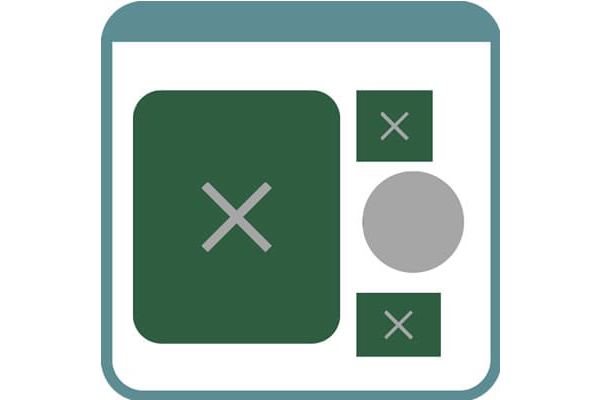If only you could have a few more weeks – you are zeroing in on a perfect website launch – but there just isn’t enough time. A few more tweaks, a few more refinements, and then, THEN you can launch.
No. Stop it.
This will almost never lead to the Utopian website launch you envision, but it certainly will push you off-schedule.
There is a better way!
Iterative design uses the “progress, not perfection” model of website creation. It gets workable sites up faster, but with a plan and resources to continue to refine and improve after launch.
It’s easy to get caught up in honing and putting the finishing touches on a website before going live. The problem is, a perfect design doesn’t exist. It is an interactive, dynamic state that depends on the ever-changing preferences of visitors.
Smart website designers know: you never get it perfect. Now don’t misunderstand: if you are woefully unprepared to go-live, I’m not talking about publishing THAT stuff for all to see. If you have broken links or missing menu items, then you aren’t ready. But I’m talking about situations where the functions are all in place, the content is intact and displaying correctly, but you still don’t feel quite right launching. Maybe the functions have a wishlist of incomplete items, despite meeting the minimum requirements. Maybe there is internal debate about design and layout choices that are instilling doubts in the efficacy of your website as it stands. These are all serious considerations before launch, but can cost you precious time and energy with diminishing returns.
So what’s the alternative? We call it iterative design. Here’s why it works and how you can use it.
[x_custom_headline type=”left” level=”h2″ looks_like=”h5″]A Productive, Workable Website—Faster[/x_custom_headline]
The longer your website is offline, the more missed opportunities for connecting with your target market. If your competitors have a less-than-stellar website, but it’s up and running, that’s where your prospects will end up if you aren’t online yet.
Your goal is a minimum viable product, sometimes called an MVP. In our context, this is a website with just enough features to give your visitors a useful experience, allow them to buy product, subscribe to your service, etc. And in the process, with each visit, you as the designer learn a little bit more. You find out what they like, what they don’t and what they are looking for that you aren’t offering yet.
There is critical learning here. What we often find is that a client’s wishlist of future changes will evolve with real website usage; so much so that it made us realize we were often putting the cart before the proverbial horse when building out future enhancement requests.
In other words, have a plan for refinement after you go live, but don’t paint yourself into any functional or design corners until you’ve watched users interact with your website.
About the only guarantee I can give any website designer is the guarantee that they will be surprised by unexpected details of user interaction with their designs.
So get that site published, and start evaluating how it’s being used!
[x_custom_headline type=”left” level=”h2″ looks_like=”h5″]Deliver What They Want Backed by Real Data[/x_custom_headline]
Guessing doesn’t work. Building the website you want might be a fun exercise in ego building and not a true assessment of what your customers need. So it may be beautiful or never-seen-before, but it doesn’t increase sales or loyalty.
The deeper logic here relates to your client, if you are building this site for someone else. One level removed from general familiarity with website building, clients can often have their crystallized views of what they want the website to be and do, still lacking in any real strategy or plan that is based on good design principles or usage data.
The best way to convince some clients that there may be a better way is to start with their way. Watch the user interaction surprise them, and then gently redirect them based on hard data. Any rational client will appreciate letting the data lead the way, rather than guessing what future enhancements are needed. The drawback here is added time and cost for all parties. But if your client is adamant about a bad design or UI choice, you have to make sure you can prove to them it’s not the right way to go through usage data.
[x_custom_headline type=”left” level=”h2″ looks_like=”h5″]Tweak Your Way to More Sales, More Interaction, More Loyalty[/x_custom_headline]
Don’t be rigid. Be flexible. Enough to adjust on the fly to the changing demands of your visitors. If you are building websites for a client, making them part of the iterative web design process can help you both gain confidence in the direction you are taking. Help them understand that ongoing change to the website is very much in the plan. Just like retail, website marketing strategies and even designs must keep up with demand. It’s just common sense to respond to the preferences of customers.
Another benefit of this iterative approach is that you don’t need to do a major redesign every couple of years. Instead, you’ll be making incremental improvements in response to everyday feedback from visitors. And because your decisions can now be based on usability data, even how you prioritize that next round of changes can be informed by user interaction with your site.
Don’t launch the perfect, late-to-the-game website.
Go live with an imperfect, in-progress site that you can adapt and reshape in response to the actions of real users.
